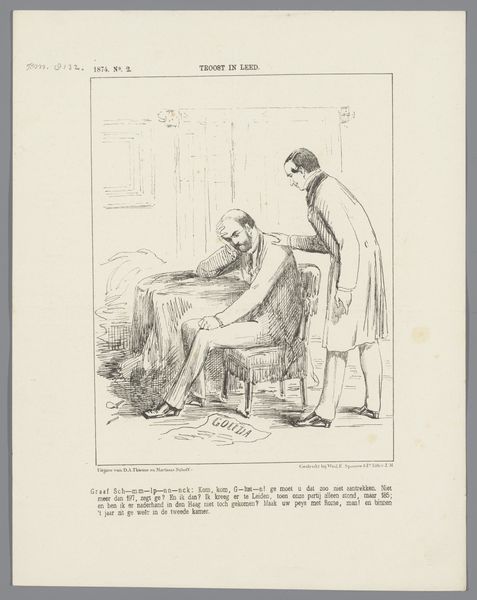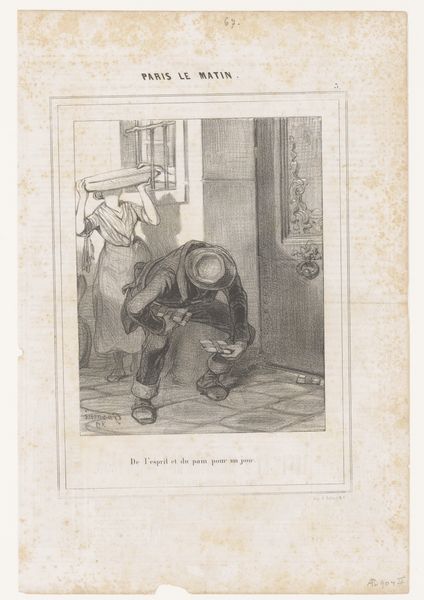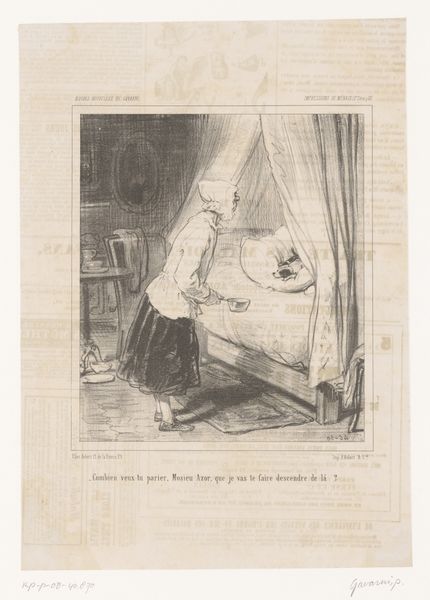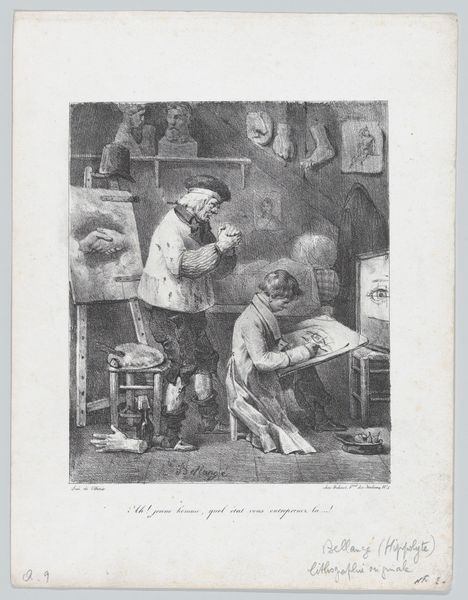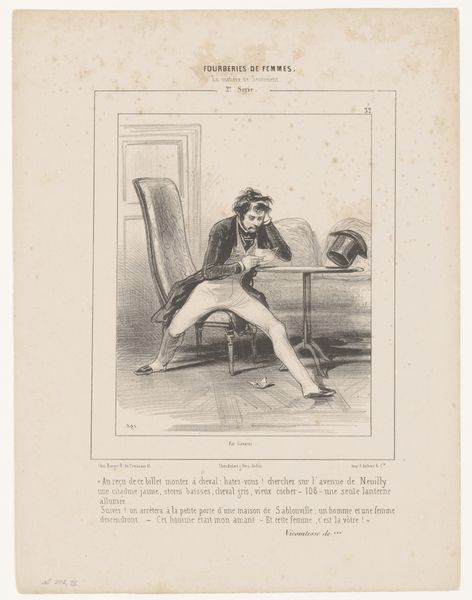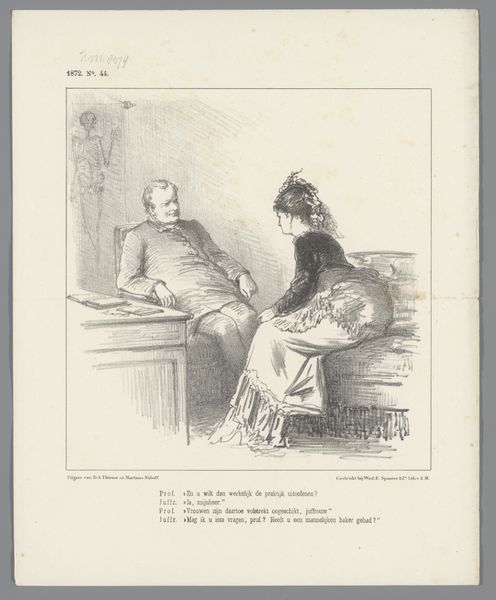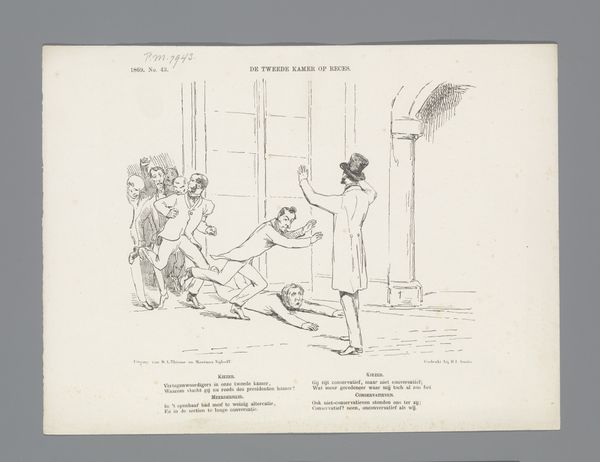
drawing, lithograph, print, paper, pencil, pen
#
portrait
#
drawing
#
lithograph
# print
#
pencil sketch
#
old engraving style
#
figuration
#
paper
#
romanticism
#
pencil
#
sketchbook drawing
#
pen
#
pencil work
#
genre-painting
Dimensions: height 308 mm, width 222 mm
Copyright: Rijks Museum: Open Domain
Editor: So, this is "Two Gamblers Sleeping on a Divan" by Paul Gavarni, created in 1846. It’s a lithograph – a print made from a drawing on stone – and it has this almost… dreamlike quality. I'm struck by the casual pose of the figures, almost vulnerable in their sleep. What catches your eye in this work? Curator: I notice the printmaking process immediately. The lithograph, as a reproducible medium, democratizes art, placing it in the realm of the everyday and accessible. Consider the stone itself, the labour of its preparation, the transfer of the image - all of this speaks to a new era of artistic production. Look at how the materiality of the lithographic crayon shapes the image, the rough sketch-like appearance due to mass production of artworks on paper that are then consumed and discarded, like newspapers... It hints at a much wider culture of disposable imagery. Editor: That's interesting. I hadn't thought about the process that way, just the aesthetic outcome. Does the subject matter relate to any economic commentary? Curator: Absolutely. Consider the divan itself – it is a material indicator of bourgeoise aspirations or possibly a caricature of such things, or is this setting indicative of a shared public accommodation and gambling location? The gamblers' sleep also might signal a consequence of a certain societal ill, whether class aspiration or other desire. Gravarni doesn't appear to be valorizing them, but he is indeed displaying them as physical realities within the sphere of consumable and easily discarded artwork and characters. Editor: So, looking at this as not just a drawing, but an item that circulated within a developing commercial system helps reframe the meaning. It connects their state of weariness to an evolving industry and social anxieties. Curator: Precisely. By viewing Gavarni's lithograph through a materialist lens, we can understand art as not merely aesthetic, but as deeply entangled with labour, class, and the means of its production and distribution, rather than just an isolated “masterpiece”.
Comments
No comments
Be the first to comment and join the conversation on the ultimate creative platform.


